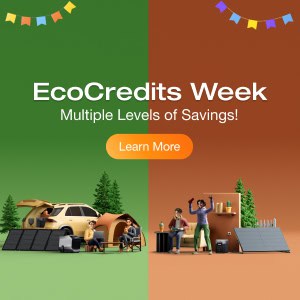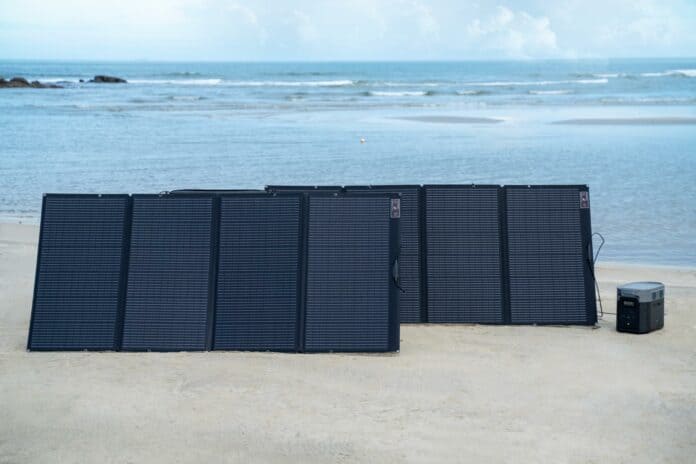As we all start to look towards more renewable ways of doing things in our everyday lives, solar power has become more appealing. Smart homeowners, businesses, and consumers everywhere are looking to solar to join the green revolution.
Solar panels are the most outwardly visible sign of the massive switch towards solar energy. But many people don’t understand how a solar panel works.
If you’re curious, then you’re in the right place. This guide takes you through everything you need to know about solar panels, how they work, and the benefits you’ll experience as soon as you make the switch.
Let’s get into it.
What Is a Solar Panel?
Sometimes referred to as PV panels, solar panels convert light from the sun into energy that is converted into electricity that you can use to power all your various devices and appliances. Sunlight is composed of particles called ‘photons,’ which the solar panels absorb to generate solar power.
Though solar panels may seem like a recent invention, the development of solar energy extends back over a century when Edmond Becquerel discovered the photovoltaic effect. From there, researchers patented the first silicon solar cell in 1941.
Following decades of development, we now have highly sophisticated and productive solar panels at an affordable price. In the early days, the technology could only run smaller devices such as calculators. Now, it can power entire homes or commercial buildings.
What Are the 4 Main Types of Solar Panels?
The efficiency of solar panels depends on the type of cell and film used in the panel construction. Here are the four main types of solar panels currently on the market:
Monocrystalline Solar Panels
Also occasionally known as single-crystal panels, monocrystalline PV panels consist of cells made from a single piece of pure silicon crystal. Monocrystalline solar panels are easily identifiable thanks to their deep blue colouration.
Monocrystalline panels are the longest-lasting of any solar panel. Products like EcoFlow portable solar panels feature monocrystalline construction because of their longer lifespan and higher conversion efficiency.
Polycrystalline Solar Panels
Opposite to monocrystalline, polycrystalline panels use more than one silicon crystal. The manufacturers pour melted silicon crystal fragments into a square mould, producing the final PV panel.
Polycrystalline PV panels aren’t as efficient as monocrystalline panels and have a lower heat tolerance, but they are more affordable.
PERC Solar Panels
Designed to improve on the classic monocrystalline design, PERC photovoltaic panels possess a passivation layer on the rear surface of the cell. The passivated emitter and rear contact reflective layer enhance how much of the sun’s energy the panel can absorb at once.
PERC allows for greater light absorption, but these benefits come at a cost. PERC PV panels often carry a much heftier price tag than monocrystalline.
Thin-Film Solar Panels
Last on our list is thin-film PV panels, designed with very fine layers that make the panels flexible. Thin-film panels do not require a frame backing, meaning they are lighter and easier to transport.
Thin-film solar panels are the cheapest option on the market and generate less waste. The catch is a lack of efficiency, as they cannot generate the same amount of energy you would get from the other three PV panel options explored above.
How Do Solar Panels Generate Electricity?
Each solar panel comprises a cluster of PV cells that turn daylight (photons) into solar energy. An inverter then converts the energy to electricity transfers and transfers it to a solar battery, which stores the electricity to power your devices and appliances. You don’t need to use solar energy immediately if used in tandem with a portable power station to create a solar generator. You can have the electricity in reserve, ready whenever you need it.
As we mentioned, this electrical generation process results from the photovoltaic effect within the PV cells. These cells are composed of two semiconductors, p-type and n-type. These join together to create what is called a p-n junction. This joining creates an electric field, forcing positively charged particles to move in the opposite direction of negatively charged particles.
This energy field is how power is transferred to the electrons within the solar panel, thus charging them. The electrons jump to a higher energy state and create a current, which gets absorbed into the PV cells. You can store this current in a portable power station or solar battery for later use.
It might all sound very complicated, but all you need to remember is that when sunlight hits the panel, it converts into electricity for you to use. Simple!
What Does a Solar Inverter Do?
A solar inverter converts direct current (DC) electricity into alternating current (AC) electricity. Your photovoltaic panels will automatically generate DC power, but you must convert this into AC electricity to power your appliances and devices. An inverter forces the DC electricity to flip back and forth constantly, thus creating AC electricity.
The earliest inverters emerged in the 19th century and usually consisted of a spinning motor, but technology has come a long way since then. These days, inverters can be compact electrical switches made from transistors with no moving parts. Similar to solar panels, they are made from semiconductor materials and grant greater control over the flow of electricity.
What Are the Advantages of Solar Energy?
Switching to solar can feel like a pricey investment when you first look into the cost of PV panels, but there are numerous benefits to joining the green revolution. It’s not just good for the planet but good for you too! Here are some advantages, some of which you may have never considered.
Reduces Your Electricity Bill
One of the immediate positive benefits that we can all agree on is reducing your electricity bill. You don’t need to rely on the grid as much if you have your own solar power system installed.
Depending on your solar power generation and storage capacity, you can even disconnect from the grid entirely and live off the energy you have accrued. In some regions of the country, you can join a net metering program, which allows you to claim credits based on the amount of excess electricity your PV panels generate and send back to the grid. Net metering could save you significant money in the long term.
An Entirely Renewable Source of Energy
We aren’t running out of sunlight any time soon, so you can charge and recharge your solar generator with the PV panels as often as you like. All you need to do is expose the PV panels to daylight. You don’t need to purchase fuel to continue generating electricity, making them far better for the environment as they don’t rely on fossil fuels. Speaking of which…
Access to a Greener Way to Live
Undoubtedly, we have become a little more environmentally conscious over the past two decades. The climate crisis has forced us to examine our practices more carefully and consider how we can do better to benefit our planet. Well, solar energy is a great place to start.
As mentioned above, solar energy requires no fossil fuels, so you aren’t using any of the Earth’s natural resources to generate power. Additionally, solar generators like the EcoFlow DELTA family do not produce harmful fumes that damage either you or the atmosphere.
Solar-powered systems offer a robust home backup or off-grid living solution; all they need is daylight. Solar isn’t just a safer option for the planet; it’s safer for you and your family.
Increases Home Value
If you upgrade your home electrical system by installing photovoltaic panels, you can increase its value.
It stands to reason that if you’re considering solar energy, other homeowners are too. If you choose to sell your property in future years, you will already have a leg-up on the competition! Not only are you saving money in your present, but you’re also earning money for your future.
Works in All Climates
A common misconception surrounding PV panels is that they only work when exposed to high-intensity sunlight. This is not the case.
If there is any daylight throughout the day, your panels will work hard to generate electricity. In fact, modern PV panels, such as bifacial solar panels, can generate electricity even in low light through ambient lighting capture. Even in an overcast climate, you can still reap the benefits of solar energy.
Easy to Set-Up, Even for Beginners!
While solar-powered systems of the past may have required professional installation, many of the newer models make life so much easier.
Many of the most advanced systems are also portable, which makes setup even more effortless. Products like the EcoFlow River 2 solar generators come with portable, foldable solar panels. They’re perfect for camping, festivals, backpacking, and off-grid outdoor applications. It couldn’t be easier, even if you aren’t the most technologically savvy.
Consider Making the Switch
It can feel like a giant leap when first considering whether to purchase a set of solar panels, but we are sure you won’t regret it. Solar energy is the future in more ways than one, and we hope that through this guide, you have come to understand just how beneficial renewable energy can be. The benefits aren’t just financial; it’s environmental.


